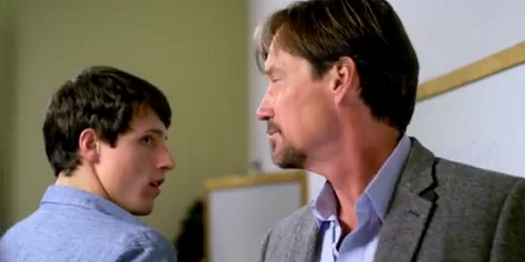Hank Williams, Jr., released a song in the late 1980s entitled “USA Today.” He never released it as a single, and it never charted, but it nevertheless got some limited radio airplay at a time when his Lynyrd Skynyrd-lite sound dominated country music airwaves. I remember hearing it distinctly: the verses laid out a laundry list of supposed American cultural failings, not unlike his oft-repeated hit “A Country Boy Can Survive.” Then he launched into the chorus:
It's true we've got our problems, Lord knows we make mistakesI couldn’t help remembering these words last week, when news trickled in that American forces massed along our southern border fired tear gas canisters across the border, into Mexico, to disperse refugees, mostly from Honduras. This struck me as wrong on multiple levels. Since when does America keep standing troops along our land borders? Since when do we fire CBRN ordnance across the border into non-combatant nations?
And every time we solve one, ten others take its place
But you won't see those refugees, headin' the other way
Welcome, to the U.S.A. today
And since when do we want to discourage refugees?
I’ve written before that I grew up conservative, surrounded by the right-wing values of family, church, and country music. We believed that government derived from moral authority, and therefore had moral authority itself. We believed that full-time work deserved a living wage. And we believed that the continued movement of refugees into America meant we were doing something right, that other nations were doing wrong.
This isn’t an exaggeration or metaphor. We believed that people coming into America to escape the hardships and terrors of life in their homelands meant America was uniquely blessed to handle complicated world situations like diplomacy and war. Yes, America had, for instance, gotten significantly drubbed in Vietnam. But the continued existence of Vietnamese boat people after the war proved we’d won the peace. Anyway, that’s what we told ourselves.
Equally important, it meant we knew the world was watching us, and we took pride in what they saw. We held ourselves up as paragons of moral virtue, economic justice, and opportunity. People came to America for various reasons, such as religious liberty, freedom from ethnic persecution, or simply to get a job. And we congratulated ourselves for being the one nation where all peoples and creeds believed they could find these things.
It didn’t hurt that the Cold War was happening. Professor Ibram Kendi, in his award-winning history book Stamped From the Beginning, notes that when John Kennedy and Lyndon Johnson threw their support behind Civil Rights in the 1960s, they didn’t do so because it was right. Johnson in particular had previously been aggressively anti-civil rights, until he did an abrupt 180. And he did so because he knew the Soviet Bloc was watching.
America’s victory in the Cold War was a PR maneuver as much as anything else. We showed our ability to juggle economic liberty, military supremacy, cultural diversity, and a willingness to change when we were wrong, which the Soviet Bloc just couldn’t. Peoples throughout the world witnessed America’s dexterity, decided they wanted to be like us, and fled to our shores, calling for asylum. And, for a while, we willingly gave it.
Our current government came to power through promises of restored greatness and national identity. Exactly when this greatness happened, or what it looked like, we couldn’t say, but we knew America loomed over the world somewhere in history, and we yearned to recapture that moment. Yet this government has forgotten that greatness stemmed not just from some in-group identity, but from the message we showed the world.
That message was that our actions followed our words. If we wanted European powers to divest their African and Asian colonies, and grant liberty to refugees fleeing to European shores, we had to do likewise. During the Reagan years we too pride (often grudgingly, but still) in accepting refugees from America’s involvement in countries like Vietnam, Guatemala, and Iran. We even lauded some refugees as heroes of bedrock American values.
t hurts to say that global peoples still witness America, and know exactly what messages we carry. We tout economic liberty, but cut our poorest loose. We drop the Mother of All Bombs in Syria, then tell Syrians to go back home and apply for refuge at the embassy. Our PR machine is broken. We need to start caring what message we’re selling the watching world—and ourselves.
















